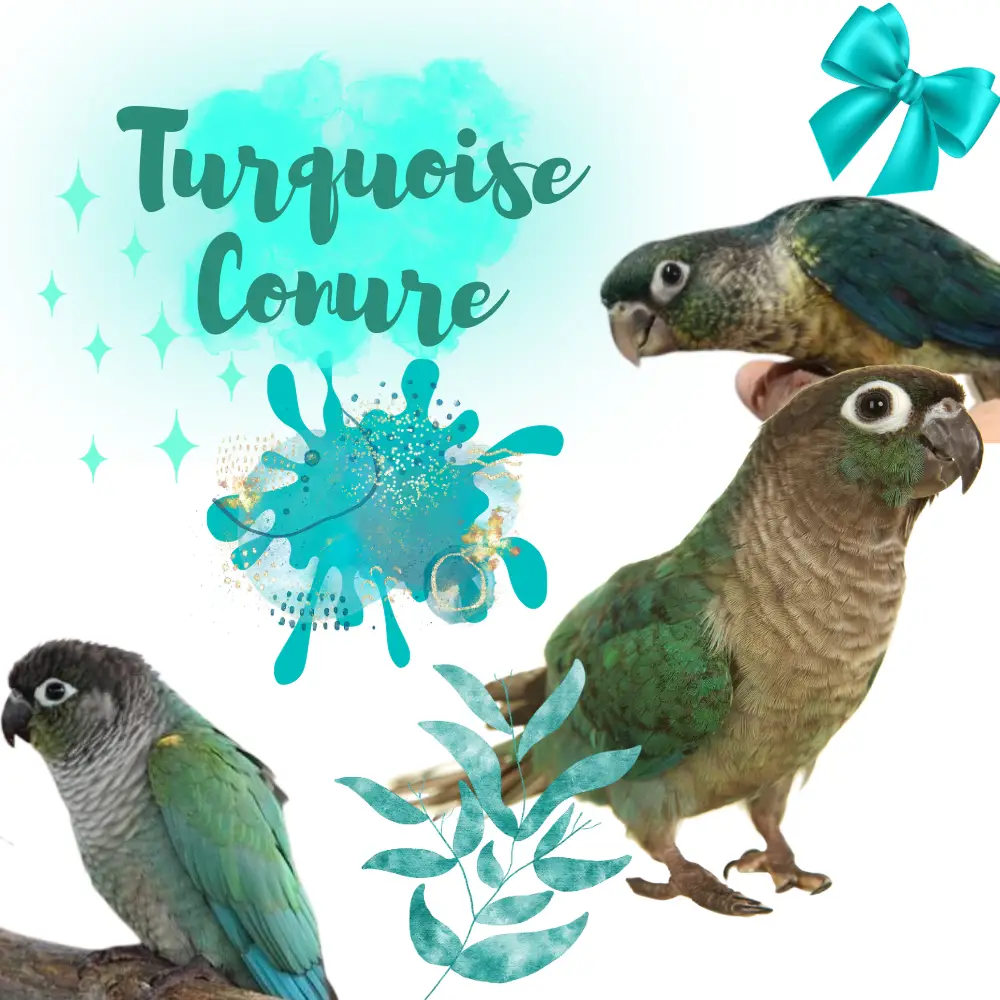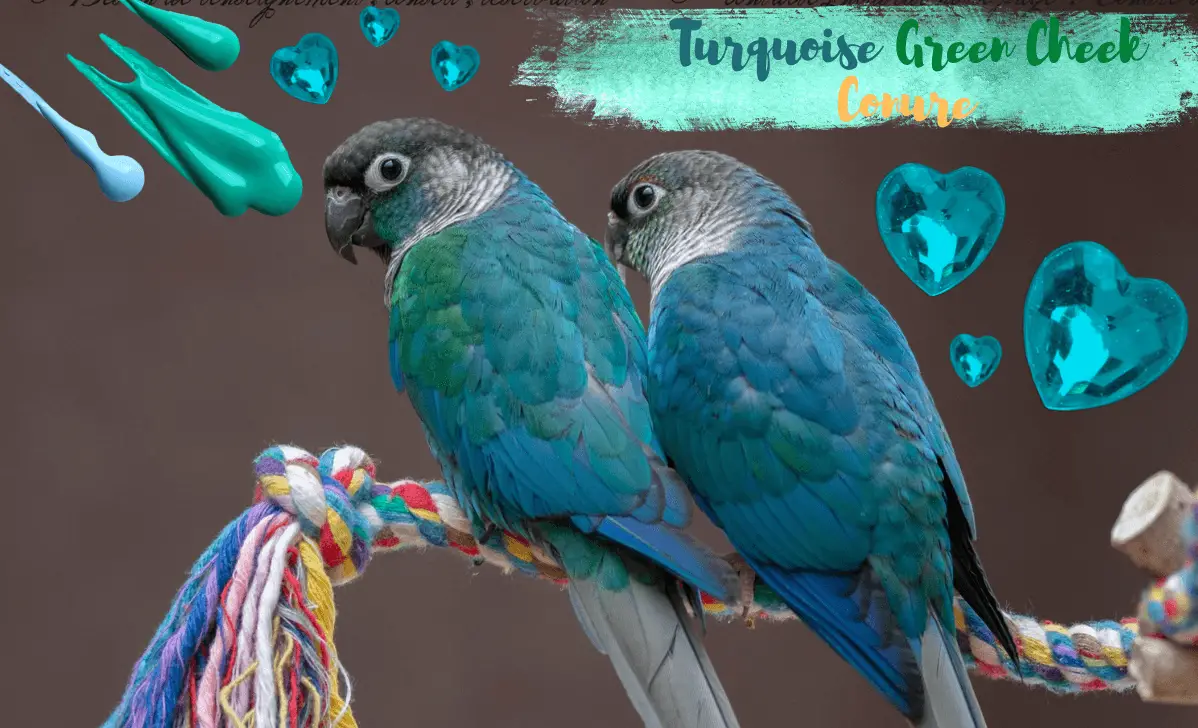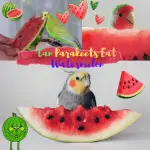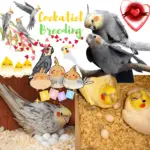
Turquoise conure is a very affectionate little parrot, which usually likes to snuggle in the palm of our hand or neck. They sneak everywhere: in our sleeves, in our sweaters, under our covers, they like to feel our presence near them. The conure personality trait makes them very endearing.
- Scientific Name: Pyrrhura molinae
- Order: Psittaciformes
- Family: Psittacines
- Genus: Pyrrhura
- Species: Conure
They are loyal and devoted to their favorite humans. They are cuddly little birds that love to give kisses. These are birds that will like to sleep in small tents designed specifically for this purpose.
It will happen that your companion pinches you it is inevitable, you have to put a pat on the beak and say “NO !!!!!”, but will try to see your reaction by doing some clowning so that you come to get them, do not do anything =, it is he who must come back not you
They are very curious by nature, you always have to watch them, and try to predict before them what they will intend to do. They have the annoying habit of wanting to explore things they shouldn’t be approaching.
Beware of stove rings that are still hot, toilet bowls, unstored cleaning products, toxic plants, etc. AND ESPECIALLY to the water bowls that we put to boil on the fire because they love to take baths and literally throw themselves into the water without paying attention to the temperature, the kitchen is a place to avoid as much as possible because as for a child, it can be fatal.
Under its clownish appearance, the Turquoise conure parakeet is a very intelligent bird that needs both physical and mental stimulation. To prevent him from getting bored, we must constantly find activities that will stimulate him. Conures are very good at games that consist of emptying and re-filling toy boxes.
They can also learn a few tricks, such as saying “Hello” and “Goodbye” while raising their paws, or even dancing and love to move quickly towards us by rubbing their beak on the table.
When sleeping, the turquoise conure parakeet may look like a harmless little angel, but beware! Once well rested, you may be dealing with a stubborn and narrow-minded bird that thinks it can scare the Doberman out of the house. In their heads, conures think they are the strongest animals on the planet.

Who is the Turquoise conure Parakeet?
It is a small parrot of about 25 cm, very active, with a huge “care fond” and great intelligence. He lives on average about twenty years.
Its two main character traits are curiosity and gluttony, which makes it an easily tamable bird.
He can be affectionate and will seek your contact as long as he finds an interest (interactions, games, treats …).
It is reputed to be a pinch, which is one of the reasons why it is not recommended to leave it with young children. Most of the time, he will pinch slightly simply to “taste” you or to tell you “be careful, I do not agree”. If you persist in your action, the pinching can be much more painful.
Wild type Molina parakeet pair
He needs a firm education and always the positive. He does not understand the concept of punishment. It is a small being composed of great emotional complexity, which implies that one must absolutely be interested, and look for the reason for undesirable behavior.
Keep in mind that it is a wild animal, so it is normal that it has the same behaviors as in nature, which is not always compatible with our daily lives.
It is also a gregarious animal that fundamentally needs congeners of its species to flourish.
Turquoise conure teenage crisis
Around the age of 4 or 5 months, he will want to show that he is strong and that he is the “leader” that he becomes great, do not let him do it, it lasts about 1 month and a half, but it is an extremely important period because if badly done it is the whole character of the bird that is at stake and it is a behavior that he will have for life!!!!!!!!!
Don’t be brutal but don’t give in to its capris, if he comes on you nicely and suddenly pinches you “ouch, ouch, ouch” put a pat on the beak by saying no!!!!!!
With great firmness, during this period even if it is hard, do not take him out every day, leave him in a cage with his toys, about two days a week and never on the same days, if you give in to him, he will get into the habit of screaming loudly, until you give in to him and then it’s done, He will have won, SO BE VERY FIRM, again it also depends on the character of the bird, some birds have a very mild teenage crisis and others very difficult and for the latter, if during this period of two months you have remained firm, it is a lifetime of happiness with your little parrot that awaits you.
But be careful before punishing, there are certain factors that must be taken into account and therefore analyze the cause of pinching
There are, however, many situations where they use their beak without the intent to hurt.
- In case of loss of balance, all psittacines use their beaks to stabilize.
- When a bird has localized pain or pain related to a disease
- Young subjects learn to discover the world through an initially uncontrolled oral exploration.
- In hand-raised subjects, the finger is likened to food
- In moments of play or hyperarousal, the bite can also occur.
Turquoise conure molting
about twice a year our birds molt, so they lose their pleas so that new ones grow, it is a difficult period for our feather dusters, so it is necessary in this case to give them, about twice a week vitamins for molting, personally, I use ‘muta-vit’ from Versele-page, when they are given these vitamins it is necessary to change the water every day because they oxidize after 24 hours.
Vitamins for Turquoise conure
They will have them naturally in the fruits and vegetables you give them, but in winter it is necessary to supplement with artificial vitamins, I always use omnivit , and as for the mutavit it is necessary to change the water given once a week.

Sexual dimorphism
There is no sexual dimorphism, you have to go through DNA sexing.
You can do it yourself. All you have to do is choose a laboratory (for example: “www.genimal.com”) and send them some feathers, which you have taken correctly. Be careful though, some site has a low price but it will be necessary to take large feathers (feathers, tail) which is painful. Other sites are slightly more expensive but very small feathers will suffice.
Molina wilderness conures group
In some cases, it is possible to determine the sex of nestlings by the mutation of their parents.
Accommodation of the Turquoise conure
All you need to know about accommodation of the turquoise conure
Indoor aviary
A cage (or better an aviary) should be as large as possible, it’s a matter of common sense.
The length is to be preferred to the height (they are not helicopters).
What is found in pet stores is too often inadequate.
Indeed, round cages and those measuring less than 90cmx50cm are to be avoided.
Attention to doors and windows
It is common for a bird to escape by accident if its owner does not have aBe careful with open windows and doors, you should know that an escaping Pyrrhula usually never returns even less to the city where there is a lot of habitation, noise, and dangerous predators (cats, foxes, crows, magpies, etc.)
Large indoor cage
Apart from the size of the cage, enrichment is just as important. Your birds need to take care of, chew, look for food.
In order to optimize space, place the perches (natural branches recovered in the forest) in the direction of the width by trying to empty the middle of the cage. Roll with toys, place food high and not under perches, and often rearrange their environment.
It is a bird that sleeps in the nest all year round. You will have to place it high by placing it outside the cage so as not to clutter the space. If reproduction is not desired, you can opt for a small tent.
Outdoor aviary
Needing to fly, it will be necessary to open his cage several times a day so that he can frolic in a secure room.
It is possible to accommodate them in an outdoor aviary all year round, as long as they have been accustomed a few months before winter. Knowing that a bird warms up by flying, an aviary of two meters in length would be a minimum. A part must be sheltered from winds and bad weather.
Here are some ideas for furnishing your space:
Vegetables & Fruits: a large majority are allowed, serve theirs in different forms: cut, whole, in the feeder, mixed with their pâté, in the form of a suspended skewer, hidden, raw, cooked … You can serve them vegetables every day, regarding fruits, twice a week is enough because of their sugar content
The diet must be rich and varied. Water and food bowls must be removed and renewed every day to preserve freshness.
- Seeds: Mixture of large parakeet seeds
- Extruded
- Sprouted seeds: Soak the seeds (about 4:00 for the smallest, 10:00 for the largest) by rinsing them as much as possible, then germinate by always rinsing them as much as possible. Serve them as soon as the seed is germinated, do not wait!
- Pâté: to give in winter if your conures are outdoors, during the molting or breeding period.
- Vitamins: They are not necessary if your conure has a balanced diet.
- Mineral block, Cuttlefish bone
- Clay: to be left permanently. Be careful, however, not to give at the same time as a treatment, the clay would soak the effect of the drug.
- Red Palm Oil, Coconut Oil: Excellent for feathers, skin, and heart function. Can be given from time to time, mixing a small amount with the seeds.
- Pine nut: Perfect as a reward, they love it.
 Turquoise conure breeding
Turquoise conure breeding
The Turquoise conure parakeet breeds once or twice a year.
The couple must have at their disposal a nesting box of size 25×25 by 30cm in height, with inside a layer of beech chips 5cm thick.
When the female is about to lay eggs, we can observe a few days before her cloaca grows bigger and bigger.
Female Brood Parakeet
It lays between 4 to 8 eggs about 2 days apart.
The job of the male will be to supply the female who is brooding.
Make sure they have a large bowl of fresh water at all times. Indeed, they will bathe there regularly so as to maintain a correct humidity level allowing the good development of the eggs.
For those who wish to follow the loan brood and then be able to handle the young, you can gradually accustom the parents to your presence. For this, open the nest once a day just so that they get used to your visit and that they understand that you are not there to steal their eggs. Before opening the nest, let them know of your visit by gently scratching the nest, for example.
It is not necessary to candle the eggs, it stresses the female and the handling is far too delicate. You risk dropping the egg to the ground, turning it over too quickly, the female may break the eggs, etc.
If you still decide to candle the eggs, you can do so 15 days after the start of incubation.
If the egg is fertilized, small veins will appear, then an increasingly large black mass.
Fertilized Turquoise conure egg and clear egg
The incubation period is about 23 days and this counts from the moment the female begins to hatch, usually from the 2nd egg. Hatching takes place at 2-day intervals. It’s a good idea to wait until the little ones are at least a week old before you can handle them, and the parents are out to eat.
Young Turquoise conure parakeet at birth
They must be banded around their 10 days. Regarding ring orders, be careful to do it in advance because delivery may be delayed.
Young Turquoise conure parakeet banded at 10 days
In accordance with the regulations of non-domestic species, applying to all conures other than the cinnamon and turquoise mutations, you must, even for a single bird:
- Make a marking or reading declaration
- Make the registration in the national I-FAP file
- Maintain an entry/exit register (CERFA)
When you transfer your young, you will be required to provide the new owner:
- A species sheet
- A certificate of transfer
- A marking declaration
- A registration traceability sheet to the national I-FAP file
Main mutations of the conure Parakeet
Molina Conures group of various mutations
- Turquoise
The body of the bird is bluish and the color varies depending on the individual. The tail is grey, the bill and legs black. Opaline-bearing individuals have yellow underwings.
- Wild type
Wild type (TS) is the standard of the species, so it is not a mutation. Its body as well as its cheeks have a green predominance. Its beak and legs will be dark in color. An opaline carrier male will have the underside of its wings yellow color.
- Opaline
The opaline mutation has a predominantly yellow predominance under the wings, thighs, and abdomen as well as red in greater or lesser quantities. The bill is black and the legs are light.
There are pre-selections among breeders aimed at obtaining subjects of a more yellow or red color.
- Cinnamon
The colors are faded, we talk about light green, the head is cinnamon color, and the beak and nails are light.
- Opaline Cinnamon (Pineapple)
Mariage des mutations Opaline et Cinnamon, la mutation Ananas arbore de vives couleurs avec une prédominance de jaune. Le bec et les ongles sont clairs.
- Co-dominant mutations: Violet and Misty
Both males and females can have these mutations and there are no possible carriers. Purple will place a veil on the bird that will darken its initial color. The misty will deposit a brown veil. We speak of single and double factors, (SF and DF). These co-mutations will be much more visible in DF. Below a purple turquoise SF, next to a purple pineapple SF then an opaline turquoise cinnamon misty.
9 Things You NEED to Know About TURQUOISE GREEN CHEEK CONURES!
SOURCE: Poodles and Parrots




















